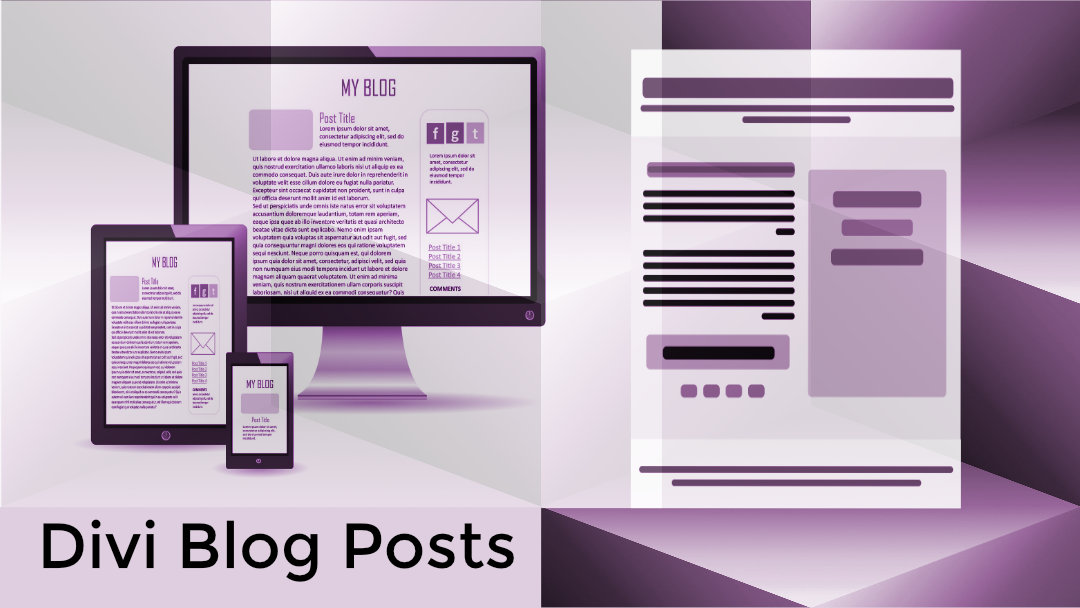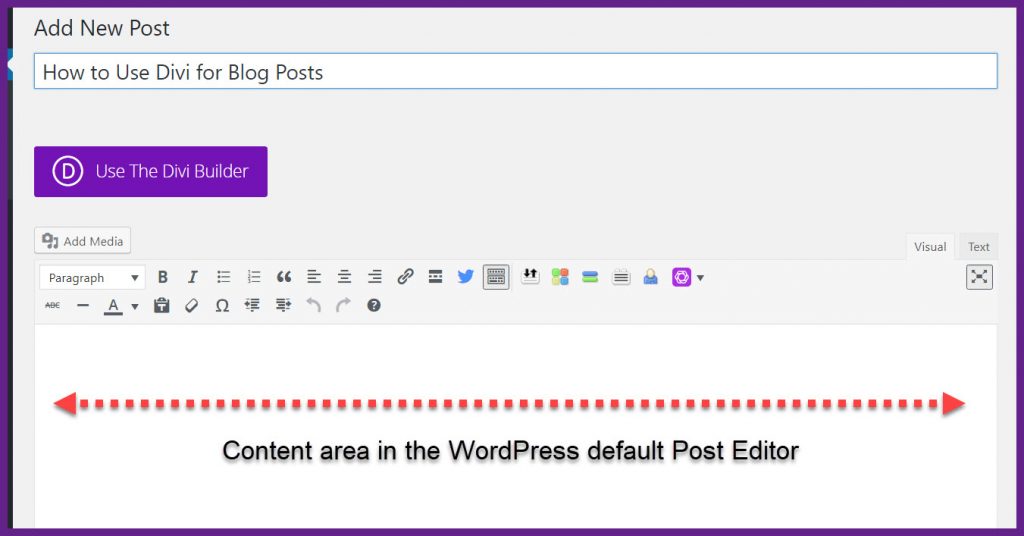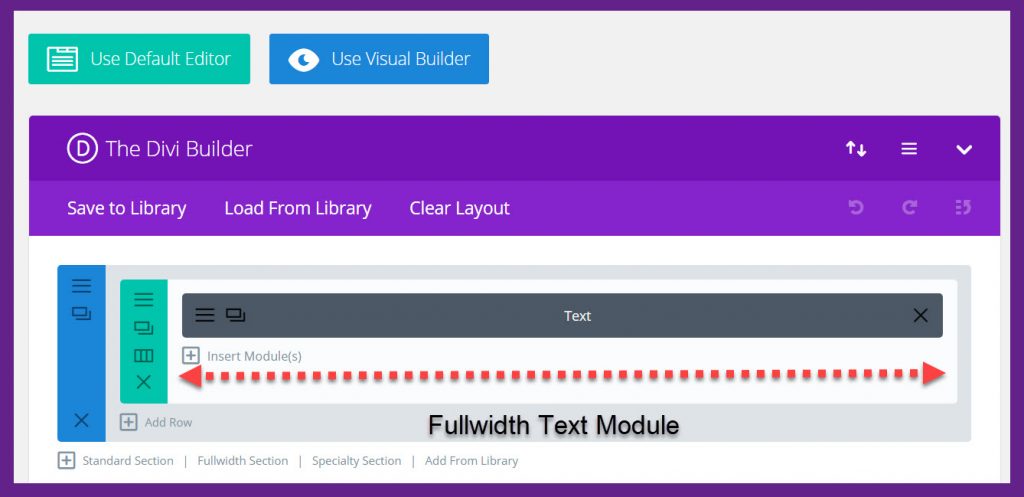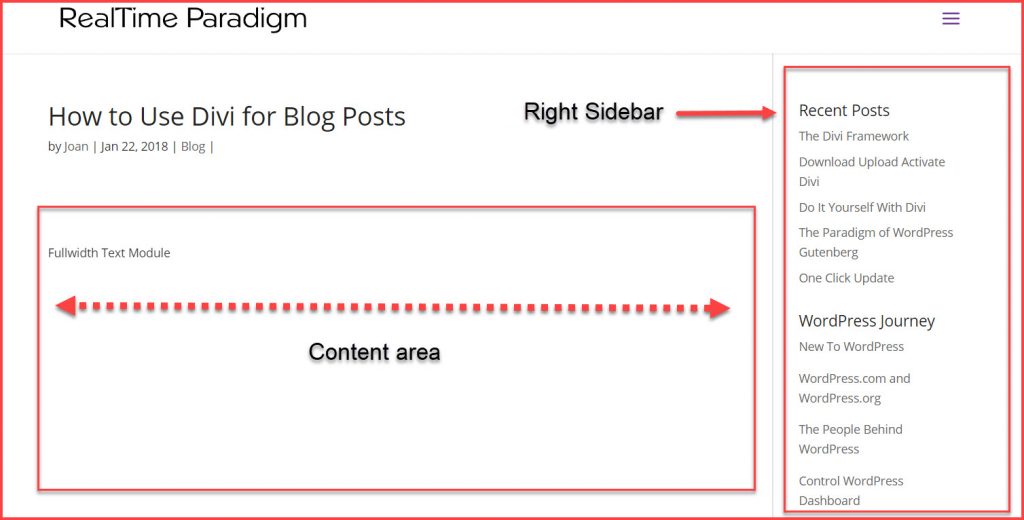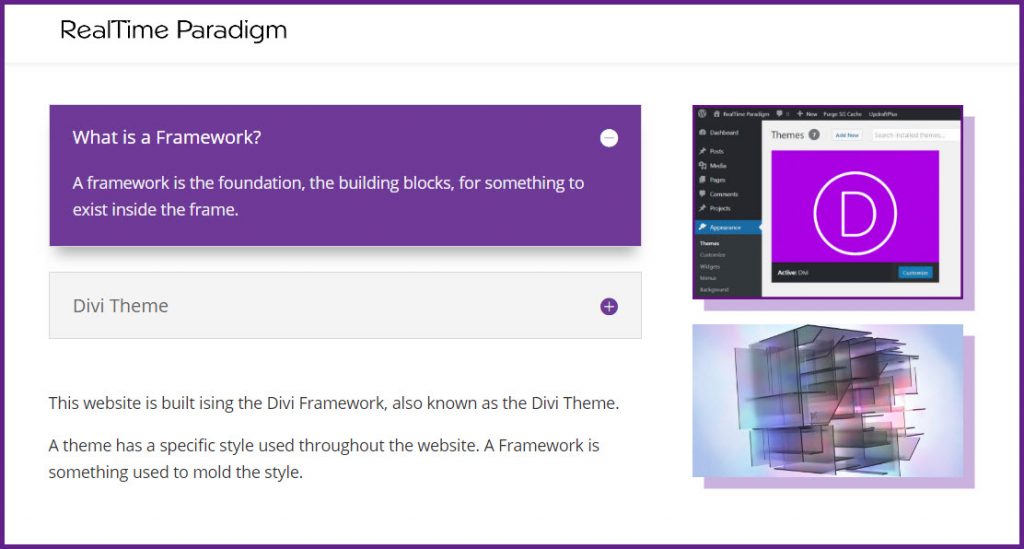Creating a blog post with Divi is right in line with the return of blogging in 2018. The building format using the Divi modules (or blocks) gives you the creative edge. You can now put content into the post without using complex shortcodes. The Divi Builder gives you many options, and your Divi blog posts will set a new style of blogging.
Where did blogging come from?
A blog comes from the word web log. In the early days you logged information into the website in a web log. The word “weblog” was invented by Jorn Barger, and the word became truncated later by Peter Merholz who used the words “we blog” and this became what we know today as “blog.” Evan Williams of Pyra labs used the word blog as a noun, and coined the word “blogger” as someone who blogs. Blogger was the original blogging platform and was acquired by Google in 2003.
Writing an article or creating content on the web is blogging. A blogger is someone who writes blog posts.
WordPress changed the blogging industry
WordPress became prominent in 2003, a blogging platform software created by Matt Mullenweg and David Little. The project started to solve the blogging software dilemma by creating WordPress. Today, WordPress is the most used software for a website or a personal blog. 29% of websites use WordPress worldwide. It is secure, updated regularly, and user friendly.
The simple act of blogging has risen to a position of influence in business, politics, science, and education. Blogs are written in an informal and conversational style. When you write a blog post you’re organizing your thinking to communicate specific information to the reader.
Divi Blog Post – Content First
Write the content first before using the Divi Builder. The blog post should have a carefully thought out strategy to build brand authority and give SEO exposure. Now that the content of the blog post is written, let’s use the Divi Builder to layout the content of the blog post.
The Divi Blog Post Layout
In this example we are working with a two column layout for the blog post. When you add a new post the WordPress default Post Editor will open.
This is the content area where you enter the content if you are not using the Divi Builder. To open the Divi Builder click on the button Use the Divi Builder. The standard section of the Divi Builder will open. Select the single column layout and then select the text module. The text module is the same width as the content area of the WordPress Editor.
Before entering the content, preview the blog post layout to get an idea of the space you’re working in. This is the “front view” of the blog post layout.
This is a two column blog post layout with a ⅔ and ⅓ column. The left column is the content area and the right column is the right sidebar. The right sidebar holds the widgets and is not included in the content area. You can use different column widths in the content area. The web page is quite wide it is 1080 pixels wide.
Now let’s look at the Divi Builder layout using a two column layout within the content area.
For this layout the Specialty Section was used with images and text to emphasize a specific point relevant to the topic. The layout should not be distracting it should complement the subject.
Here is a preview of the content.
You can be conventional or creative. Sometimes you need to get a specific piece of information across to your reader and you might want to open the blog post with a quote or a topical emphasis. In the example above, the opening content emphasizes the meaning of the word framework. Your reader should not have to “work” to find the information.
Working With Divi Modules
The Divi Modules have specific functions. There is a large selection of modules, and it’s tempting to be creative. Think about the subject of the blog post and how to put content into the post without too much decoration.
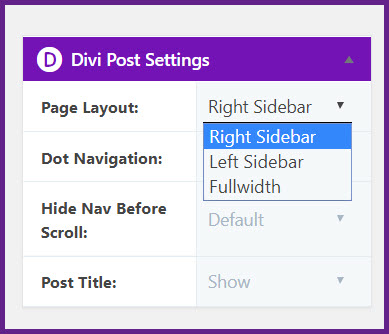
The Divi Post Settings
These options give you a selection of layouts for the post. It’s a matter of choice or personal preference. You can put the sidebar on the left, or the right side, or set the blog post to fullwidth.
It depends on the Theme you are using and the particular style you want for the blog.
What You Shouldn’t Do When Writing A Blog Post
Write long paragraphs
Have no pictures
Not enough Headings and Subheadings
Have obtrusive social sharing buttons that follow the reader as they scroll down the page
Moving animations and flashing buttons that distract the reader
Popup windows showing the next article
Text that tells you how many minutes the blog post takes to read
Push a product or sell something rather than inform the reader
Blogg Ranking
Google now ranks websites that have original content or blogs as part of their content creation and marketing strategy on a higher level. This means you should keep your blog updated and write regular posts.
You don’t want your blog to be idle for long periods of time, but you also don’t have to write a post everyday, or week. Regular blog posts will depend on your schedule and plans to create the content for the blog.
Using the Divi Builder to write blog posts does not interfere with SEO. The search engine reads the content in the site regardless of the placeholder. The modules used in Divi are the placeholders for content. WordPress already has built in SEO features. The heading formats are preset and correspond to the SEO requirements for the search engine.
Use headings and subheadings
Think about using Divi for blog posts the way you like a post to read. The most used word about blogging is “optimize.” Optimize means make the best or most effective use. This translates into making the content of the blog post effective for the reader and not the search engine.
A blog post is like a magazine article in that it is informative and brief, or a shorter read. The blog post is a communication point. A way to inform and connect with the reader.
Create a Blog Template
When you find a particular layout that works, you can create a template for the layout and save it to the Divi Library Layout. This can save you time instead of recreating the blog post each time, especially if you find a particular layout that works well for your blog posts.
The way to create Divi blog posts is to take the Divi Builder and use it with enough balance to make your blog post an interesting read. It is a challenge, but then the extra mile travelled is worth the journey, especially if you informed the reader and they benefited from the information.
Say it in words – design the future. When I’m not building websites in Divi, I’m writing about Divi. The most versatile, flexible theme, built for the user.

